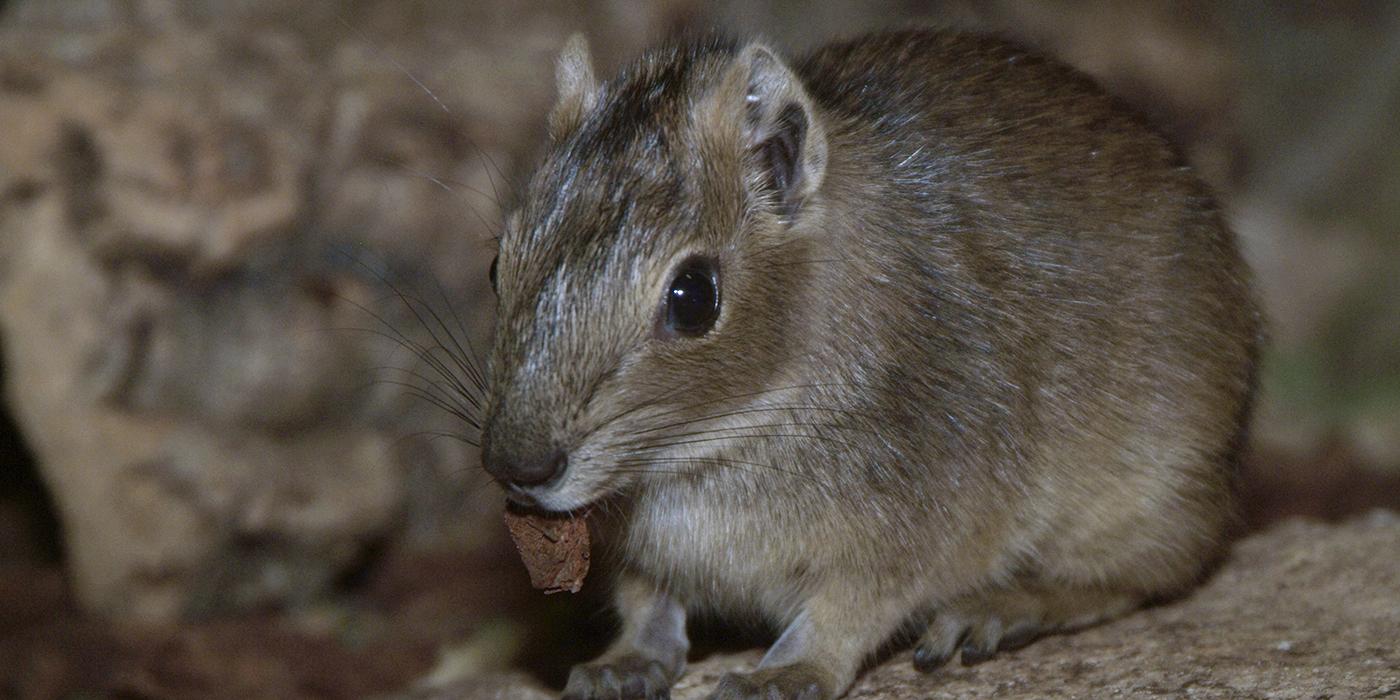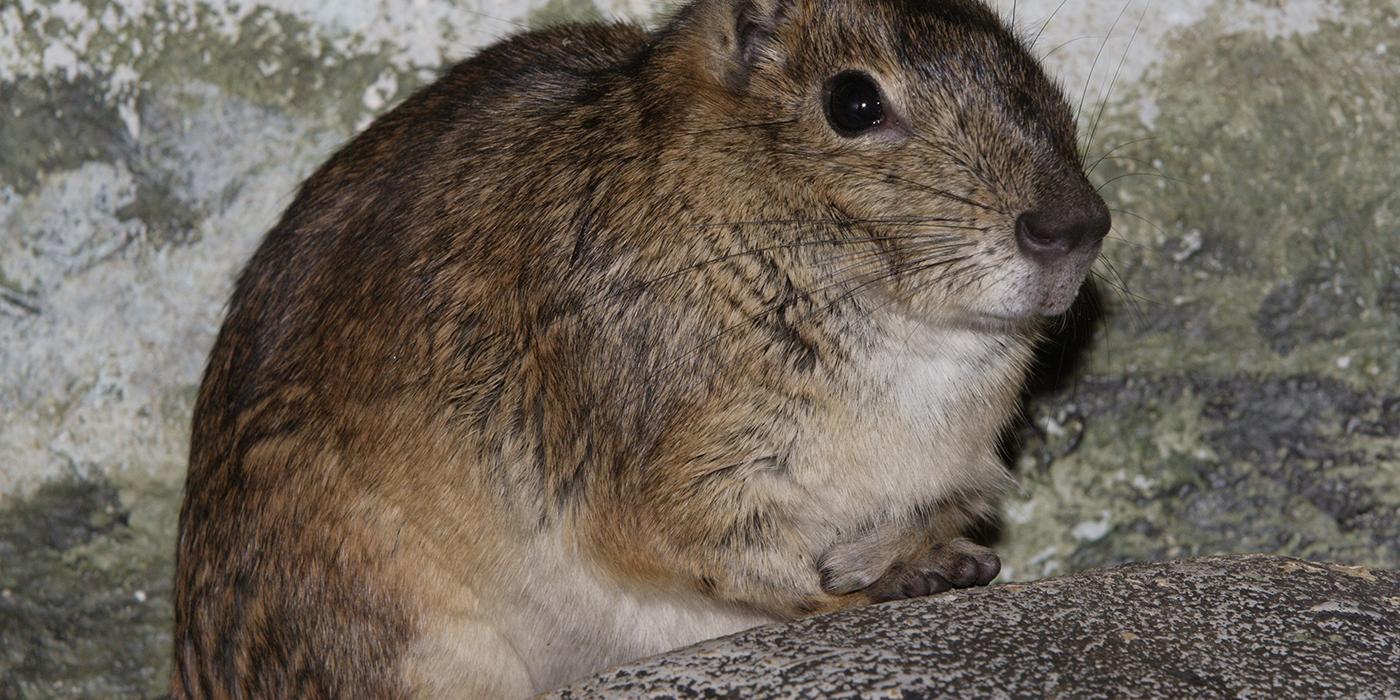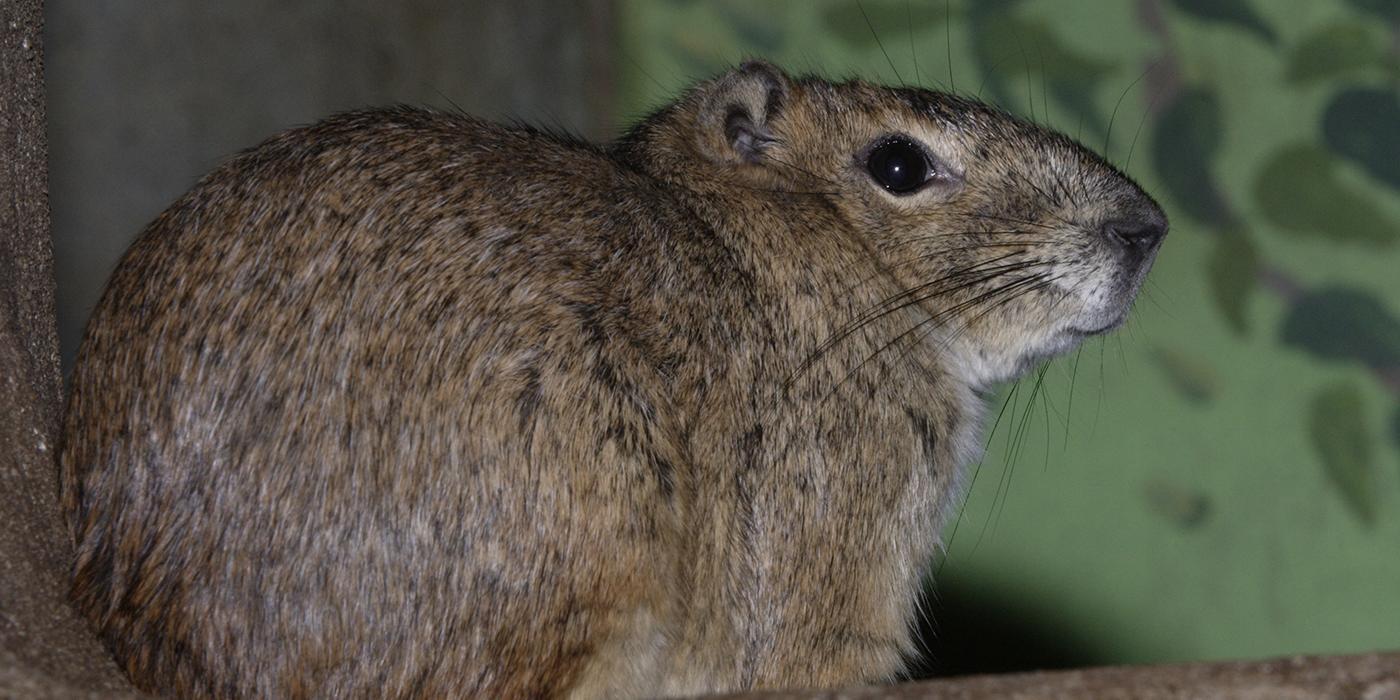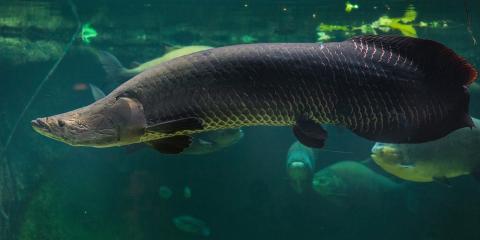Physical Description
The rock cavy is a relative of the domestic guinea pig. It has a grayish coat with white or black mottling, a white throat and a yellowish white belly. Its rump and the back of its thighs are reddish. Rock cavies have no tails.
Their feet are padded, and they have blunt nails, rather than the well-developed sharp nails found in other genera in this family. These adaptations help them move across slick rock surfaces.
Size
The are about 8 inches (22 centimeters) long and weigh 32-35 ounces (900-1,000 grams).
Native Habitat
These animals are found in the thorn-scrub of northeastern Brazil, where they live in arid, pebbly areas near stony mountains or hills, and have adapted to living in rocky outcrops, called lajeiros. They shelter under rocks or in the fissures between stones, sometimes making a burrow under the stones.
Lifespan
In the wild, they live about 3 to 4 years. Lifespan can be 8 years in human care.
Communication
Rock cavies make a variety of vocalizations, including chirps, squeaks and squeals. When frightened or excited, they may emit a piercing alarm whistle.
Food/Eating Habits
These agile climbers do most of their foraging in trees and can leap from boulder to boulder. They eat vegetation, primarily a variety of leaves found within their region. They will also eat buds, flowers and bark when available.
Sleep Habits
Rock cavies stay in their burrows most of the day and emerge in late afternoon or evening to begin the search for food.
Social Structure
Cavies live in small family groups. They are, for the most part, very docile and only get aggressive with younger cavies.
Reproduction and Development
Because they inhabit isolated patches of rock, a single male may defend a rock pile to which females are drawn for shelter. This allows the male exclusive access to several females.
Rock cavies become sexually mature when they are about 1-3 months old. Their gestation period varies from 50 to 75 days, which is long for rodents. The average litter size for a cavy is one to three offspring. The young are born well developed, and the male does not contribute much to their rearing.
Conservation Efforts
Rock cavies are heavily hunted for food by native people and are experiencing habitat destruction.
Help this Species
- Share the story of this animal with others. Simply raising awareness about this species can contribute to its overall protection.
- Are you a student? Did you love what you learned about this animal? Make it the topic of your next school project, or start a conservation club at your school. You'll learn even more and share the importance of saving species with classmates and teachers, too.





